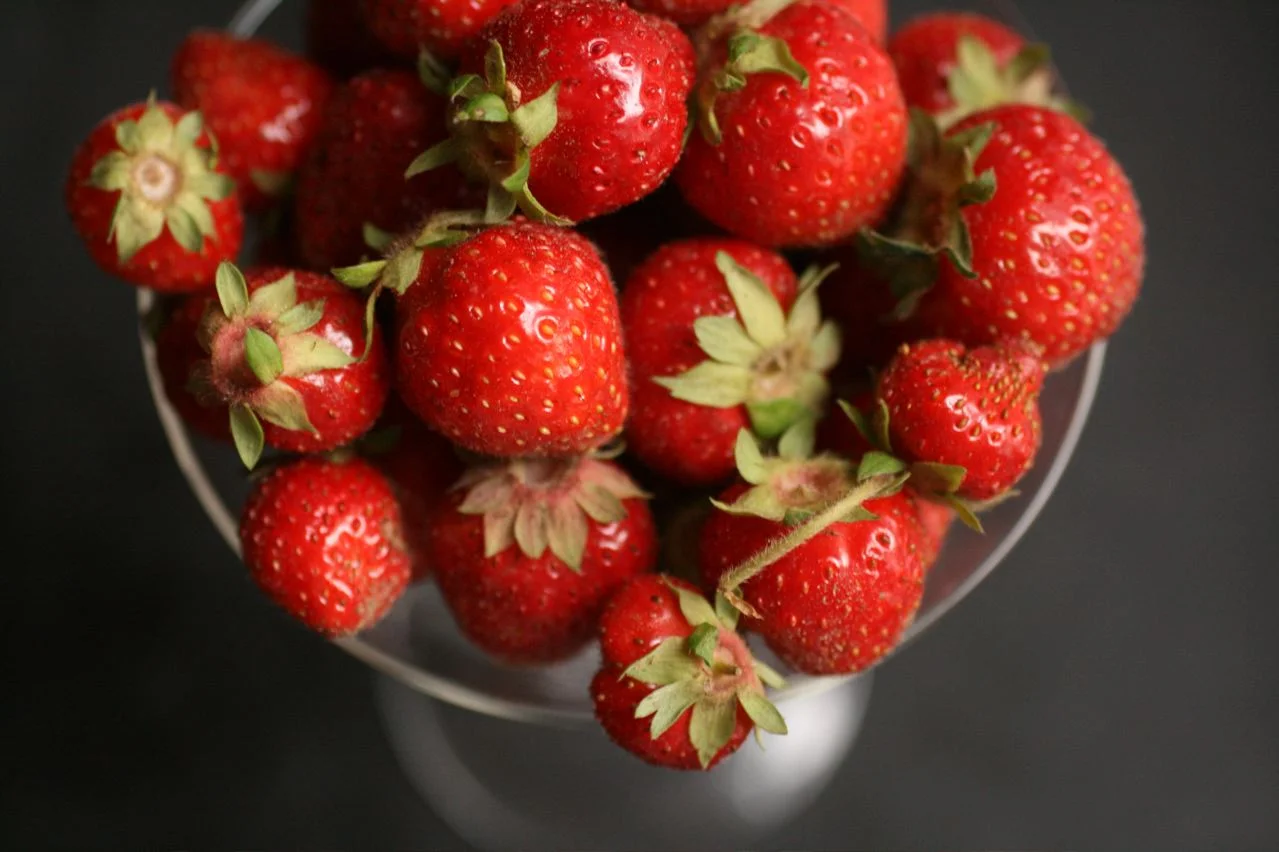Growing Strawberries in the Pacific Northwest
Strawberries are always a popular plant for the home garden because they are delicious and easy to grow in our Northwest climate. Nothing says summer more than the first bite of a sweet, homegrown strawberry. Plus, they can be grown easily in small spaces and in containers.
CHOOSING YOUR PLANTS
Would you like an early bumper crop? Strawberries all season long? Another harvest in early fall? The type of strawberry you choose makes a big difference in when and how much you will harvest.
There are 3 classes of Strawberries:
• JUNE-BEARING (summerbearing) strawberries produce one large crop in June.
• DAY-NEUTRAL strawberries fruit continuously throughout the summer and into fall.
• EVERBEARING (two-cropping) strawberries produce a crop in June and another in early fall.
Where will you be planting your strawberries?
DAY-NEUTRAL and EVERBEARING strawberries produce few runners, making them ideal if you would like your plants to remain somewhat neatly in their areas. They are great for borders, garden beds, and hanging planters. If you have a large space or would like your strawberries to spread more rapidly, choose JUNE-BEARING types.
NOTE: Strawberries are self-fertile so only one variety is necessary for successful yields... But who could stop at just one kind?
SOIL & PLANT PREPARATION
Choose a location with well-drained soil that receives full sun. Prepare the site by incorporating new organic matter using a planting amendment such as compost or soil-building conditioner. The goal is to have soil that is composed of about 25% new organic matter and 75% existing soil. You can add an all-purpose or small-fruit fertilizer at planting time following the directions on the package.
When planting in containers, always choose a high-quality potting soil. Containers filled with garden soil will not drain well and the soil will be too heavy for your strawberry plants' liking.
Prepare strawberry plants by removing them from pots and gently massaging the roots to separate them slightly, then plant.
NOTE: Bare-root plants should be soaked in water for about an hour before planting. Plant them so the crown remains just above the soil (crowns planted below the soil are subject to fungal disease).
PLANTING IN THE GARDEN
We recommend one of these two successful planting systems:
• THE HILL SYSTEM
• THE MATTED ROW SYSTEM
THE HILL SYSTEM is generally is the best system for DAY-NEUTRAL and EVERBEARING strawberries because they produce relatively few runners. After preparing the soil, make mounded rows about 6-9 inches tall and 1-2 feet apart. Plant the strawberry starts 12-15 inches apart in the mounded rows. Maintenance consists of simply removing all the runners that grow between the rows before they root. The idea is that by removing the “baby” plants (runners) the mother plant can focus on making bigger and better fruit. Runners can be rooted in another spot or put into the compost bin.
THE MATTED ROW SYSTEM is generally best for JUNE-BEARING strawberries, which produce ample runners. Plant the strawberry starts 1 foot apart in rows 3-4 feet apart. Then allow many of the runners to spread and fill in the rows, without letting the runners grow too densely (the foliage of the plants need as much sun and air as possible). Pruning out excess runners and foliage will likely be necessary.
PLANTING IN CONTAINERS
Strawberry plants do very well in all types of containers: plastic, wood, ceramic, or terra cotta. You can even build your own strawberry planter, as shown by our friend Kirsten Dunn on the Dunn DIY blog. Whichever container you choose, be sure it has drainage holes. Strawberries do not like wet feet.
Simply fill the container with high-quality potting soil and an all-purpose or small-fruit fertilizer, following package directions. Plant one strawberry plant for every 10-12 inches of pot diameter. Strawberries have a spreading habit and shallow roots, so an extremely deep container is not necessary, but choose containers at least 6-8 inches tall. If you prefer a fuller look in your container right away, plant more densely but divide the plants after one year so they don't become overcrowded and underperform.
STRAWBERRY CARE
WATER deeply and thoroughly on a regular schedule throughout the dry summer months. Drip watering or a soaker hose is preferable to overhead watering and helps avoid fruit molding and other diseases. For containers, water when the surface of the soil begins to dry out. Strawberries definitely don't like sitting in wet, soggy soil but they don't want to dry out either!
FERTILIZE when planting and then annually in April with an all-purpose or small-fruit fertilizer, following the directions on the package.
REPLANT with new strawberry plants after 4-5 years because by then they will likely have diminished yields. It’s best to wait for a few years before planting in the same location due to pests and diseases that can build up in the soil. For CONTAINERS, wash the container with a diluted bleach solution and use new soil when replanting to avoid pests and diseases.
And now for the best part! Enjoy your delicious, homegrown strawberries. Once you've grown your own it will be hard to go back to store-bought strawberries ever again!
Have questions or are interested in learning more about the varieties we carry? Ask us on social media using #heyswansons.





